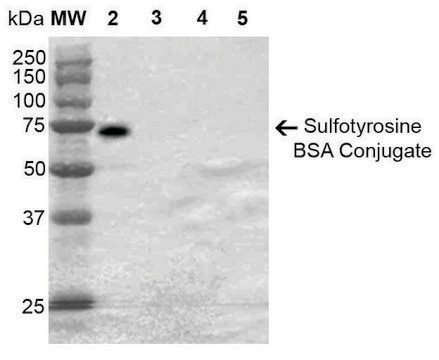F3261
[Glu1]-Fibrinopeptide B human
≥90% (HPLC)
Sinonimo/i:
Fibrinopeptide B
About This Item
Prodotti consigliati
Origine biologica
human
Livello qualitativo
Saggio
≥90% (HPLC)
Forma fisica
powder
tecniche
LC/MS: suitable
electrophoresis: suitable
N° accesso UniProt
Temperatura di conservazione
−20°C
Stringa SMILE
CC(C)[C@H](NC(=O)CNC(=O)[C@@H](N)CCC(O)=O)C(=O)N[C@@H](CC(N)=O)C(=O)N[C@@H](CC(O)=O)C(=O)N[C@@H](CC(N)=O)C(=O)N[C@@H](CCC(O)=O)C(=O)N[C@@H](CCC(O)=O)C(=O)NCC(=O)N[C@@H](Cc1ccccc1)C(=O)N[C@@H](Cc2ccccc2)C(=O)N[C@@H](CO)C(=O)N[C@@H](C)C(=O)N[C@@H](CCCNC(N)=N)C(O)=O
InChI
1S/C66H95N19O26/c1-31(2)53(85-48(90)29-73-55(100)35(67)16-19-49(91)92)64(109)83-42(26-46(69)88)61(106)82-43(27-52(97)98)62(107)81-41(25-45(68)87)60(105)78-37(18-21-51(95)96)57(102)77-36(17-20-50(93)94)56(101)74-28-47(89)76-39(23-33-11-6-4-7-12-33)58(103)80-40(24-34-13-8-5-9-14-34)59(104)84-44(30-86)63(108)75-32(3)54(99)79-38(65(110)111)15-10-22-72-66(70)71/h4-9,11-14,31-32,35-44,53,86H,10,15-30,67H2,1-3H3,(H2,68,87)(H2,69,88)(H,73,100)(H,74,101)(H,75,108)(H,76,89)(H,77,102)(H,78,105)(H,79,99)(H,80,103)(H,81,107)(H,82,106)(H,83,109)(H,84,104)(H,85,90)(H,91,92)(H,93,94)(H,95,96)(H,97,98)(H,110,111)(H4,70,71,72)/t32-,35-,36-,37-,38-,39-,40-,41-,42-,43-,44-,53-/m0/s1
KPBJTGOVJLITON-OECXYHNASA-N
Informazioni sul gene
human ... FGB(2244)
Cerchi prodotti simili? Visita Guida al confronto tra prodotti
Amino Acid Sequence
Descrizione generale
Applicazioni
- during LC-MS to avoid cross-contamination and to analyze the performance of mass spectrometer and LC-instrument
- for two-point calibration during 2D (dimensional) gel electrophoresis and protein identification by mass spectrometry of histidine (his)-Pup (prokaryotic ubiquitin-like protein) isolated from Mycobacterium smegmatis
- for two-point calibration during one-dimensional gel electrophoresis and tandem mass spectrometry (MS) for the characterization of soluble protein sample obtained from the salivary gland homogenates of Cimex lectularius
- as a standard for the correction of mass drift in data obtained from MS and MS/MS performed on peptides obtained from trypsin-digestion of protein disulfide isomerase (PDI)
Azioni biochim/fisiol
Altre note
Codice della classe di stoccaggio
11 - Combustible Solids
Classe di pericolosità dell'acqua (WGK)
WGK 3
Punto d’infiammabilità (°F)
Not applicable
Punto d’infiammabilità (°C)
Not applicable
Dispositivi di protezione individuale
Eyeshields, Gloves, type N95 (US)
Certificati d'analisi (COA)
Cerca il Certificati d'analisi (COA) digitando il numero di lotto/batch corrispondente. I numeri di lotto o di batch sono stampati sull'etichetta dei prodotti dopo la parola ‘Lotto’ o ‘Batch’.
Possiedi già questo prodotto?
I documenti relativi ai prodotti acquistati recentemente sono disponibili nell’Archivio dei documenti.
I clienti hanno visto anche
Il team dei nostri ricercatori vanta grande esperienza in tutte le aree della ricerca quali Life Science, scienza dei materiali, sintesi chimica, cromatografia, discipline analitiche, ecc..
Contatta l'Assistenza Tecnica.










![[Met5]Enkephalin acetate salt hydrate ≥95.0% (HPLC), powder](/deepweb/assets/sigmaaldrich/product/structures/158/699/80b4b65b-7e48-49a2-ba61-4433cf1f375c/640/80b4b65b-7e48-49a2-ba61-4433cf1f375c.png)

